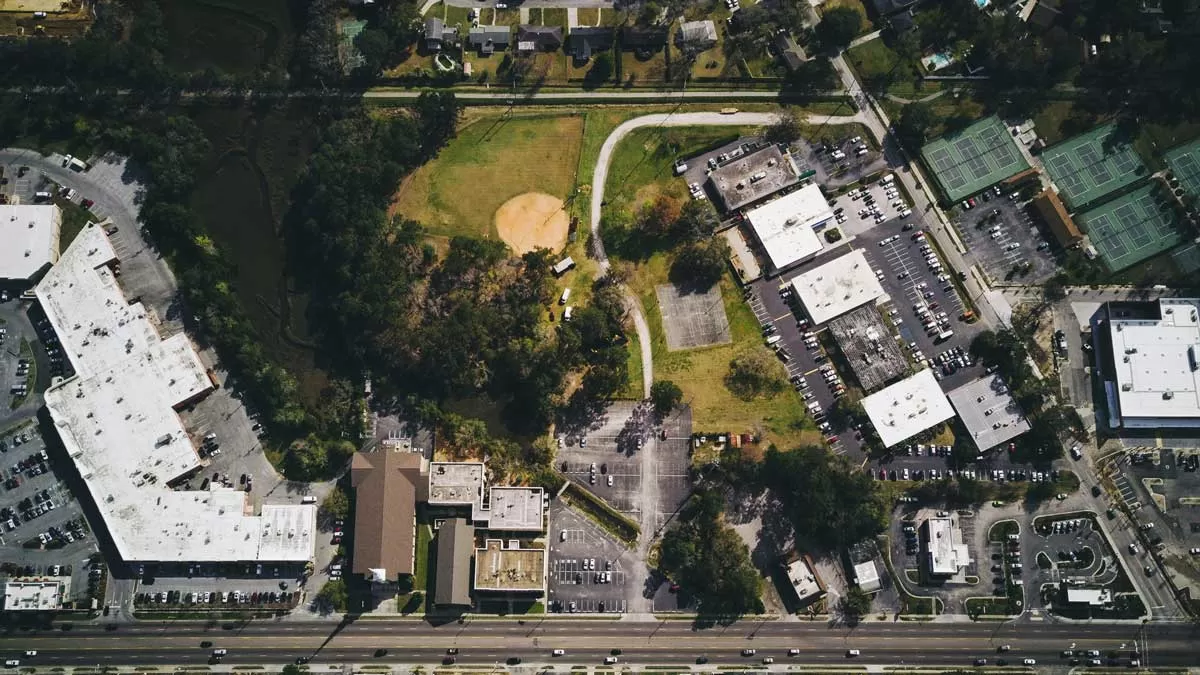India’s airports are moving in the right direction, using technologies like AI and BIM to increase automation.
Technology plays a vital role in infrastructure projects today. Modernisation of airport infrastructure has been taken up in various cities. What are the latest technologies in demand?
Technologies of the future are the ones which require the least human intervention. And the trend of incorporating these in India’s airports of today and tomorrow has begun. Improving efficiency through AI-based operations is becoming more and more common. Today, we have already moved from baggage X-rays to in-line handling systems. Check-ins have been smoothened to such an extent that counter check-ins are reduced to only baggage drops. We may soon see the drop of check-in baggage also automated. Security checks have been largely automated, without the need for stamping of boarding passes, etc. Boarding gate manning is already on partial self-help mode.
So, the biggest technology in demand today is artificial intelligence and its various manifestations in all functions of an airport. And it’s improving day by day.
How are AI and other technologies helping this sector in terms of faster project completion or process integration or advancement in equipment/engines?
The contribution of AI in advance conflict management with use of robotics, BIM, etc reduces a lot of re-work due to errors in execution on the construction front. This enables reduction in delivery times of projects. AI is also helping in devising more appropriate work methodologies for complex project management and execution.
BIM and 3D printing techniques are being evaluated by a lot of aviation companies. What are the advantages they offer to the sector?
BIM and 3D printing are two different technologies with different purposes. BIM is a data-centric system which has a wide application range – architecture, design, construction, operation, maintenance and so on. Its advantages are a complete pool of data, giving a big boost to the critical analysis of operational efficiency and its further improvement. For project delivery, BIM is today the foremost technology to resolve complex conflicts during design and construction. This advance identification of conflicts and their resolution helps improve project execution efficiency.
3D printing is an on-the-ground construction technology that is still in the development phase. As of now I see limited use of 3D printing in airport infrastructure project execution. But I am sure with further development of this technology will be a big support in delivering projects with shorter execution times.
What are the changes in airport infrastructure that the pandemic has brought about? How has the aviation business changed in the past year or two?
Touchless systems at the entry, at the check-in counters, security checks and boarding are the major changes that I can think of. Technology has played a big role. As a matter of fact, today air travel is considered to be safest mode of mass transportation. Every airport has put in a lot of effort to ensure this, and kudos to the teams all over the country and the world.
Could you talk about the airport business setback during the pandemic and how it is reviving?
Like every other transport business, air travel and hence the airport business too came to a halt during the pandemic. However, air travel being a more controlled travel mode, the implementation of covid protocols was easier than with other modes of travel. Though cost-intensive, the implementation happened fast, and we can see the revival of domestic travel to a large extent to pre-covid levels today. International travel is likely to take some more time to revive. It is important to see this in line with maintaining the safety of all stakeholders.
The Airports Authority of India plans to invest around Rs. 25,000 crore in the next 4-5 years for expansion and development. Do you think the Indian aviation sector is ready for such expansion with current policies and infrastructure?
Certainly, the Indian aviation sector has the potential for such expansion. A major thrust on the UDAN scheme will unleash a lot of potential in terms of outreach to remote areas, and develop a lot of tourist potential. Don’t forget that our country has a huge domestic tourist and tourism potential that is still largely unexploited. Aviation will certainly cater to this.
Another major factor is that airports in the big cities are more or less full in their potential passenger capacity. The development of cities around airports has restricted land availability to expand, so new second airports such as NMIAL and NIAL are becoming a necessity.
There are concern areas, but they are part of any development, such as land acquisition, rehabilitation, green laws, etc. With improved understanding and integration these problems can be sorted out. The necessity for development will remain, as progress is essential.
Are there any hurdles or challenges in the path of these targets? How can we overcome them?
Yes, there are challenges. Like I said land acquisition, rehabilitation, green laws, approvals, etc. The way to solve them is an integrated project development model involving all stakeholders as participants and a guarantee of a share of the pie when the revenue starts coming in.
Aerotropolis is gaining momentum in India to generate commercial development at and around India’s airports. What are latest trends in this space?
As of now we can see an aerotropolis only around New Delhi Airport in India. That also is mainly a concentration of hotels. My opinion is this concept still needs to mature and see how to add value to the overall airport development. It certainly has potential; the need is to right-position and right-proposition it.
One major factor that needs consideration during development of an aerotropolis is that with major airports now encompassed within city limits, the development should not adversely affect the traffic management of the airport, inconveniencing passenger movement.
Public-private partnerships are increasing like never before. We also see huge investments in greenfield airports. What are your thoughts on this?
PPP models are the future for development of any infrastructure, and airports are no different. The increase in PPPs is welcome.
The UDAN scheme and the need for second airports in major cities will certainly see huge investment in greenfield airport projects.
How are PPP policies helping this sector to grow, and how will this shape up in the future? The biggest advantage of the PPP model is access to private sector funds. That provides an immense money pool for completing crucial infrastructure. There are certain issues which do need resolution in PPP policy formulation, such as land procurement, rehabilitation, approvals, etc. The modality of single-window clearance needs to be made more robust. Initiatives in this regard are already ongoing.
Your final thoughts on the current status and future trends in airport infrastructure.
Airports of the future are going to be more and more technology-driven, with minimum human intervention in their operations. As airports require large land parcels to develop, the challenges of land availability will push airports towards improving efficiency to add more capacity to existing infrastructure. That’s where AI will have a major role. The challenges of airport operations in future will be catered for by AI engineers and scientists, and hence their involvement from the planning stage itself has extreme importance.
One other aspect of airports of the future will be to develop transportation models to and from the airport. Something more than a metro needs to be thought about. I am sure some planners might have already started putting their minds to this.
As a project manager, what are your views on project overrun and cost overrun in this sector? What are the main reasons for this, and what best practices do you recommend?
To compare my experience between projects in India and the Gulf and Western countries, the major difference is that in those places the actual execution on the ground starts only after a full-fledged investigation, engineering, detailing and planning is mostly completed. Thus, we see sufficient time allocated to this crucial aspect in project delivery, and surprises during execution are far less. In India, these activities run in parallel to project execution. Hence, many surprises are encountered during execution for which solutions need time. And time is money.
Upskilling of resources is assuming urgency in India as we move towards more and more technology-driven project execution. As we are all aware, the Indian infrastructure workforce shuffles between construction and agriculture. This creates major hurdles in upskilling due to the temporary nature of their stay in projects. It is imperative that upskilling happens with creation of a dedicated workforce for the industry. That’s the need of the hour.


















